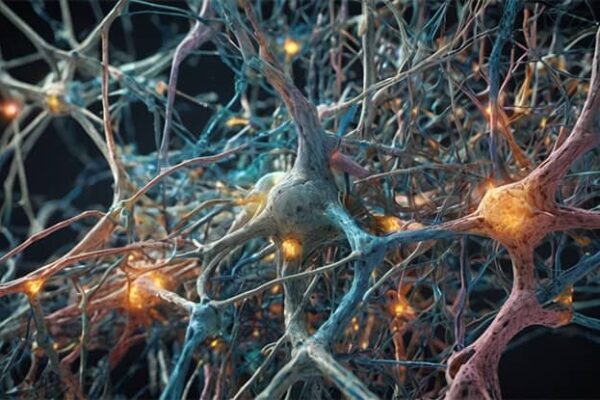Asthenic syndrome is a condition characterized by chronic fatigue, decreased work capacity, and a general deterioration in well-being. Despite the apparent simplicity of the symptoms, asthenic syndrome often remains underestimated and underdiagnosed. According to statistics from the World Health Organization, about 20% of the population in developed countries suffer from asthenia, and this number continues to grow each year.
Chronic fatigue not only significantly reduces a person’s quality of life, but it can also lead to serious health problems if ignored and not treated in time. Asthenic syndrome is often accompanied by a weakened immune system, exacerbation of chronic diseases, sleep disorders, and an increased risk of developing depression. Therefore, it is extremely important to pay close attention to the symptoms of chronic fatigue and seek medical help promptly.

Asthenic Syndrome: Symptoms
Asthenic syndrome is characterized by a wide range of diverse symptoms that significantly impair a person’s quality of life and disrupt their normal functioning. The primary and most notable manifestation of this condition is chronic fatigue, which does not subside even after prolonged rest. However, in addition to constant fatigue, asthenia is associated with a number of other alarming symptoms that affect both physical and psycho-emotional states.
The symptoms of asthenic syndrome can vary depending on the severity, individual characteristics of the body, and the underlying causes of this condition. In some individuals, symptoms may be mild and not significantly affect daily life, while in others, asthenia can lead to disability and social maladaptation. This is why it is crucial to recognize the early signs of chronic fatigue and take the necessary steps to address it.
The typical clinical picture of asthenic syndrome includes not only constant fatigue and weakness but also a range of cognitive, emotional, physical, and autonomic disturbances. Let’s take a closer look at the most characteristic symptoms of this condition.
Constant Fatigue and Weakness
- Persistent feelings of exhaustion, lack of energy, and complete depletion.
- Reduced work capacity, quick fatigue during any physical or mental activity.
- The need for longer periods of rest and sleep.
- Difficulty performing routine daily tasks and responsibilities.
Sleep Disorders
- Difficulty falling asleep or frequent awakenings throughout the night.
- Shallow, poor-quality sleep that does not result in feeling refreshed.
- Feelings of unrest and drowsiness even after prolonged nighttime sleep.
- Nightmares, night sweats.
Cognitive Impairments
- Problems with concentration, distraction, and forgetfulness.
- Slowed thinking, difficulty making decisions.
- Reduced mental productivity and efficiency.
- Apathy, lack of initiative, and loss of interest in life.
Emotional Disturbances
- Irritability, temper outbursts, and sudden mood swings.
- Increased anxiety, restlessness, and nervousness.
- Depressive states, feelings of hopelessness, and anhedonia (loss of ability to feel pleasure).
- Low self-esteem, pessimistic outlook on life.
Physical Symptoms
- Frequent headaches.
- Muscle pain, cramps, and spasms in various muscle groups.
- General stiffness and pain during movement.
- Digestive disorders (nausea, bloating, constipation, or diarrhea).
- Reduced libido and sexual activity.
Immune Disorders
- Weakened immunity and increased susceptibility to colds and infections.
- Frequent acute respiratory viral infections (ARVI) and exacerbation of chronic diseases.
- Slow recovery after illnesses.
The severity and combination of symptoms can vary among individuals. In severe cases, asthenic syndrome often leads to significant limitations in daily activity, social isolation, and disability. Therefore, it is crucial to notice the early signs of chronic fatigue and take timely measures to eliminate it.

Causes of Asthenic Syndrome
Asthenic syndrome can be caused by a variety of factors, both physiological and psychological. Identifying the true causes of chronic fatigue is a crucial step in the successful treatment of this condition. Only by addressing the root cause can one achieve long-term remission and full recovery of lost strength and work capacity.
The causes of asthenic syndrome can be roughly divided into three main groups: physical (somatic) causes, psychological factors, and lifestyle-related factors. Often, asthenia develops against the backdrop of a combination of several causes and triggering factors, creating a vicious cycle that worsens the severity of symptoms and complicates recovery.
Identifying the causes of asthenia requires a thorough medical history, study of patient complaints, analysis of the physical and psychological state, and necessary laboratory and instrumental tests. This comprehensive approach helps determine the true origins of the problem and prescribe appropriate treatment.
Physical Causes
- Chronic somatic diseases (cardiovascular diseases, diabetes, chronic inflammatory processes, cancer, autoimmune disorders, etc.).
- Endocrine disorders (hypothyroidism, adrenal hyperfunction, impaired gonadal function, etc.).
- Anemia and other blood disorders.
- Vitamin and mineral deficiencies (iron, magnesium, zinc, B vitamins, vitamin D, etc.).
- Aftereffects of severe infections, intoxications, injuries, or surgeries.
- Side effects of certain medications (antidepressants, anticonvulsants, etc.).
Psychological Factors
- Chronic stress at work, in the family, or personal life.
- Depressive and anxiety disorders.
- Post-traumatic stress disorder (PTSD).
- Past psychological trauma and crises.
- Eating disorders (anorexia, bulimia).
- Emotional burnout (depersonalization).
Lifestyle
- Chronic sleep deprivation and circadian rhythm disorders.
- Unbalanced diet lacking essential nutrients.
- Sedentary lifestyle, hypodynamia.
- Alcohol abuse, smoking, drug use.
- Excessive physical or mental overexertion.
- Frequent stressful situations and conflicts in the social environment.
Asthenic syndrome often develops against a background of a combination of factors, including physical, psychological, and lifestyle-related causes. Therefore, identifying and addressing all factors contributing to the development of chronic fatigue is key to treating asthenia.

Diagnosis of Asthenic Syndrome
Diagnosing asthenic syndrome is a crucial and complex process that requires a comprehensive approach and the involvement of various medical specialists. Accurate diagnosis is the foundation of successful treatment and allows the selection of the most effective therapeutic strategy.
The main difficulty in diagnosing asthenic syndrome lies in the fact that chronic fatigue can be a symptom of a variety of diseases and disorders. This is why it is so important to conduct thorough differential diagnostics to rule out other possible causes of asthenia. Only after ruling out organic causes of somatic and mental nature can asthenic syndrome be diagnosed as an independent functional disorder.
The diagnostic process for asthenic syndrome usually includes several stages: collecting complaints and medical history, conducting a physical examination, and performing necessary laboratory and instrumental tests. Detailed analysis of all symptoms and factors that may trigger chronic fatigue helps the doctor form a comprehensive view of the condition and determine the optimal treatment strategy.
The diagnostic process usually includes the following steps:
Collection of Medical History and Complaints
The doctor thoroughly interviews the patient about their complaints, symptoms, their duration, severity, and dynamics. Special attention is paid to factors that could have triggered the development of asthenia (stress, past illnesses or injuries, physical and mental overload, sleep and dietary disturbances, etc.). Information is gathered about chronic diseases, past surgeries, lifestyle habits (sleep schedule, diet, physical activity), bad habits, and the patient’s psychological state.
Physical Examination
The doctor conducts a thorough examination of the patient, assessing their overall physical condition. Anthropometric indicators (height, weight, body mass index) and vital signs (blood pressure, pulse, body temperature) are measured. The presence or absence of edema, skin rashes, enlarged lymph nodes, and other possible symptoms that may point to a specific disease causing asthenic syndrome is checked.
Laboratory and Instrumental Tests
Depending on the suspected causes of asthenia and associated symptoms, the doctor may prescribe the following tests:
- Complete blood count and biochemical blood tests (to detect anemia, inflammation, metabolic disorders).
- Hormonal tests (for diagnosing endocrine disorders).
- Immunological tests (to rule out autoimmune diseases).
- ECG, echocardiography, Holter monitoring (to assess the cardiovascular system).
- Ultrasound of the abdominal and pelvic organs.
- CT scan or MRI (if structural changes in organs are suspected).
- Polysomnography (to diagnose sleep disorders and sleep apnea).
- Consultations with specialists (endocrinologist, rheumatologist, hematologist, oncologist, psychotherapist, etc.).
Differential Diagnosis
It is important to conduct thorough differential diagnosis to rule out other diseases whose symptoms may manifest as asthenic syndrome. Such conditions include:
- Chronic viral infections (HIV, hepatitis, cytomegalovirus, etc.).
- Early-stage cancer.
- Fibromyalgia and chronic fatigue syndrome.
- Sleep apnea and other breathing disorders during sleep.
- Depressive, anxiety, and somatoform disorders.
- Parkinson’s disease and other neurodegenerative disorders.
- Intoxications and side effects of medications.
Only after ruling out organic causes of both somatic and mental nature can asthenic syndrome be diagnosed as an independent functional disorder.

Asthenic Syndrome: Treatment
The treatment of asthenic syndrome should be comprehensive and multifaceted, aimed not only at alleviating the symptoms but also at addressing the underlying causes. Only through such an approach can sustained remission be achieved, along with the restoration of lost vitality and work capacity.
The choice of specific therapeutic methods is determined by the individual characteristics of the patient, the severity of asthenia, and the causes that triggered the development of this condition. In some cases, pathogenetic treatment of a chronic disease may be necessary, in others – the correction of sleep and nutrition disorders, while in others – psychotherapeutic support and stress management.
In most cases, treating asthenic syndrome involves a combination of several therapeutic approaches. This may include medication for symptomatic treatment and replenishing deficiencies, lifestyle and dietary adjustments, psychotherapy, and relaxation techniques, as well as eliminating or compensating for the underlying cause if it is known. Only a comprehensive, multifaceted approach can lead to the most effective results.
Depending on the specific clinical situation, the following therapy methods may be applied:
Treating the underlying disease
If asthenia is caused by a chronic somatic disease (anemia, hypothyroidism, diabetes, autoimmune disorder, etc.), it is necessary to undergo appropriate pathogenetic treatment for that disease under the supervision of a specialist. Eliminating or compensating for the underlying cause often leads to significant improvement in overall well-being and a reduction in asthenic symptoms.
Lifestyle adjustment
- Normalization of sleep and rest schedule. It is recommended to maintain a proper circadian rhythm, ensuring sufficient night sleep duration (7-9 hours). If sleep disorders are present, consultation with a somnologist may be necessary.
- Balanced nutrition according to individual needs. It is advisable to increase the consumption of foods rich in iron, magnesium, zinc, B vitamins, Omega-3 fatty acids, and fiber.
- Regular physical activity and active leisure. Moderate-intensity aerobic exercise (walking, swimming, cycling, dancing) for at least 30-40 minutes daily is considered optimal.
- Complete cessation of harmful habits, such as smoking, alcohol abuse, and excessive caffeine or energy drink consumption.
- Stress management using relaxation techniques (meditation, yoga, outdoor walks, hobbies, etc.).
Medication therapy
Depending on the causes, severity of asthenia, and the presence of comorbid disorders, the following groups of drugs may be prescribed:
- Vitamin and mineral complexes to replenish deficiencies (iron, magnesium, zinc, B vitamins, D supplements, etc.).
- Antidepressants (in the presence of depressive disorders, often using SSRIs – selective serotonin reuptake inhibitors).
- Anxiolytics (to manage anxiety states, including benzodiazepine tranquilizers or herbal preparations).
- Nootropic drugs (piracetam, vinpocetine, cerebrolysin, etc.) to improve cognitive functions, concentration, and memory.
- Plant-based adaptogens (eleutherococcus, ginseng, Rhodiola rosea, Aralia, etc.) to enhance stress resistance and restore vitality.
- Sleep normalizing drugs (sleep aids or herbal sedatives), in cases of insomnia.
- Anti-inflammatory and pain-relieving drugs (for muscle pain, headaches, and other physical manifestations of asthenia).
It is important to understand that medication treatment must be strictly individualized and prescribed by a doctor, considering factors such as age, gender, comorbid conditions, and concurrent medication use. Self-medication may worsen the situation and lead to side effects.
Psychotherapy and relaxation techniques
If psychological factors such as stress, depression, anxiety disorders, post-traumatic stress disorder, or other emotional disturbances are the cause of asthenia, psychotherapy is recommended. The most effective methods include:
- Cognitive-behavioral therapy (CBT) for correcting dysfunctional beliefs, thoughts, and behavior patterns that contribute to asthenia.
- Gestalt therapy for understanding and resolving internal conflicts, psychological traumas, and crisis situations.
- Interpersonal therapy to improve interpersonal relationships and social adaptation.
- Acceptance and commitment therapy to develop mindfulness, emotional flexibility, and self-regulation skills.
- Family systems therapy (in cases of family relationship conflicts).
In addition to psychotherapy, various relaxation techniques play a significant role in reducing stress and anxiety, restoring emotional balance:
- Meditation, breathing exercises, and autogenic training.
- Yoga, qigong, tai chi, and other meditative movements.
- Various types of massage (classic, acupressure, cupping, aromatherapy massage).
- Aromatherapy using essential oils (lavender, rosemary, orange, etc.).
- Music therapy, art therapy, bibliotherapy, and other creative practices.
- Outdoor walks, contact with nature, gardening.
It is important to choose the most suitable psychological relaxation methods for an individual and make them a regular practice to achieve the maximum effect.

Prevention of asthenic syndrome
The prevention of asthenic syndrome is just as important as its treatment. It is much easier to prevent chronic fatigue than to combat a fully developed persistent disorder. Timely preventive measures help maintain high levels of productivity, quality of life, and emotional well-being.
Successful prevention of asthenia is based on several key principles: leading a healthy lifestyle, competent stress management, and regular health monitoring. Adhering to these principles significantly reduces the risks of developing chronic fatigue and its negative consequences.
It is crucial to realize that preventing asthenic syndrome is not a one-time event but a continuous process that requires constant attention and discipline. Only regular care for one’s physical and psychological well-being will help preserve energy, vitality, and an optimal level of productivity for many years.
The key factors for successful prevention are:
Healthy lifestyle
- Balanced, rational nutrition with sufficient amounts of proteins, complex carbohydrates, fiber, vitamins, and minerals.
- Full night sleep of 7-9 hours, maintaining a proper sleep-wake schedule.
- Regular physical activity for at least 150 minutes per week (walking, swimming, cycling, dancing, etc.).
- Complete abstinence from smoking, alcohol abuse, and psychoactive substances.
- Maintaining a normal body weight, preventing overweight and obesity.
Stress management
- Rational time management and workload distribution at work and home.
- Mastering stress management skills (time management, delegation, setting realistic goals).
- Regular use of relaxation techniques (meditation, yoga, massage, nature walks).
- Maintaining healthy social connections, communication with loved ones.
- Seeking timely psychological help in cases of prolonged stress or crisis situations.
Health control
- Regular preventive medical check-ups.
- Early detection and adequate treatment of any chronic somatic diseases.
- Strict adherence to medical advice regarding medications and lifestyle adjustments.
- Avoiding self-medication and uncontrolled use of medications or supplements.
Adherence to healthy lifestyle principles, competent stress management, and timely health monitoring will significantly reduce the risk of developing asthenic syndrome and help maintain a high level of productivity and quality of life.

Conclusion
Asthenic syndrome is a fairly common condition characterized by chronic fatigue, reduced productivity, and overall malaise. Its symptoms can significantly impair a person’s quality of life and negatively affect their social, professional, and family functioning.
The causes of asthenia can be varied – from physical illnesses and nutrient deficiencies to psychological disorders and unhealthy lifestyles. Therefore, an accurate diagnosis requires a thorough comprehensive examination involving various specialists and the necessary laboratory and instrumental tests.
Treating asthenic syndrome must focus on eliminating the underlying causes. Additionally, lifestyle correction, normalizing sleep and nutrition, regular physical activity, psychotherapeutic support, and relaxation techniques are essential for reducing stress and restoring emotional balance.
Medication therapy may include vitamin and mineral complexes, antidepressants, anxiolytics, nootropic and adaptogenic agents, but their prescription must be strictly individualized and monitored by a physician.
The prevention of asthenia includes maintaining a healthy lifestyle, effective stress management, timely treatment of chronic diseases, and regular health monitoring. Adhering to these principles will help maintain high productivity and quality of life.
Asthenic syndrome is not merely fatigue but a serious disorder requiring careful attention and a comprehensive treatment approach. Ignoring the symptoms of chronic fatigue can lead to significant health problems, so it is crucial to seek qualified medical assistance at the first signs of asthenia.
Recommended Literature
- “The Post-Viral Fatigue Syndrome” by Rachel Jenkins. This book discusses chronic fatigue syndrome, often associated with asthenia, and includes studies on post-viral asthenia, its symptoms, and treatments.
- “Therapy of Asthenic Disorders” by O. A. Shavlovskaya. This text covers the classification, diagnostic criteria, and therapeutic approaches to treating asthenia, including the use of Metaprot and other medications.
- “Chronic Fatigue Syndrome: A Biological Approach” by Patrick Englebienne and Kenny De Meirleir. This scientific publication explores the physiological and biochemical aspects of chronic fatigue syndrome, which is often related to asthenia.




